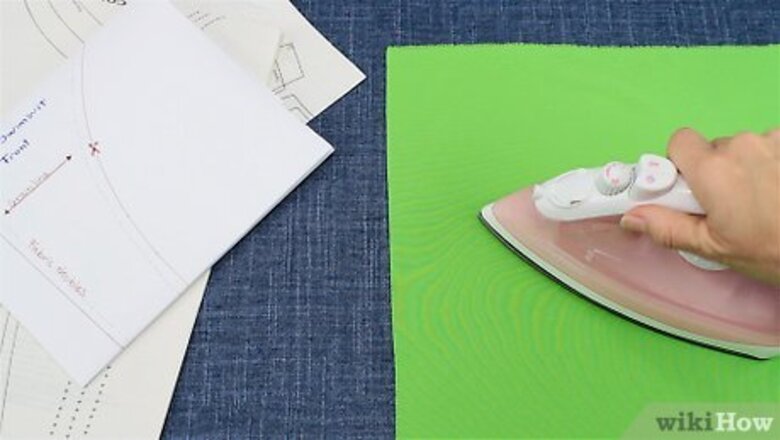
views
Washing the Fabric and Cutting the Pattern
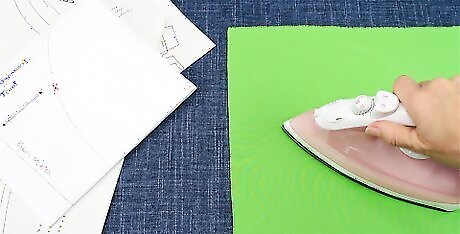
Wash and iron your fabric to ensure it is flat. Before you start pinning your pattern, it is important to make sure that your materials and your work surface are flat. If your fabric has a tendency to shrink, you can also wash and dry it before you iron it so it doesn’t shrink after you sew it. Cotton is fairly prone to shrinking.
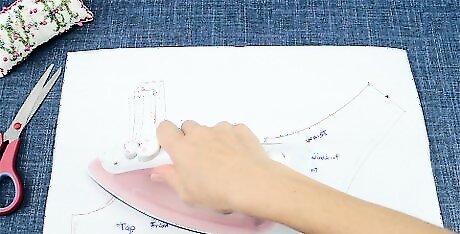
Iron your pattern to smooth it out. Patterns can get wrinkles in them just like fabric can. Use an iron on low heat and gently pass over your pattern to smooth it out. Swipe your iron over your pattern 2 to 3 times. Most patterns are safe to iron. Check the instructions to see if yours is.
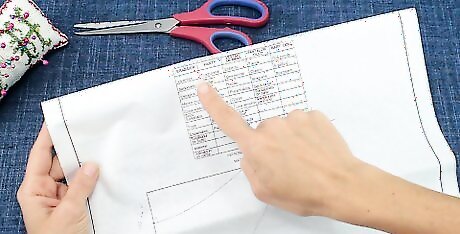
Read the directions on the pattern for any specific instructions. Some patterns will tell you to fold your fabric a certain way, or how to lay them on your fabric to get the most out of it. Read the instructions on the package of your pattern carefully and follow them if there are any. Most advanced patterns will have specific instructions.
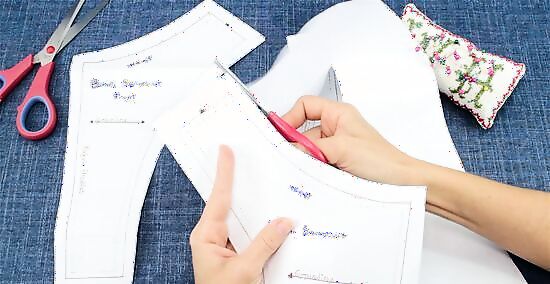
Cut the pattern pieces out of the paper 1 inch (2.5 cm) outside the lines. Do not cut your pattern directly on the lines in case you need more room while sewing your garment. Use new scissors that aren’t dull to cut your pattern. If your pattern is already in separate pieces, you don’t need to do this. You will most likely need to cut patterns that only have a few pieces.
Positioning the Pattern Pieces on the Fabric
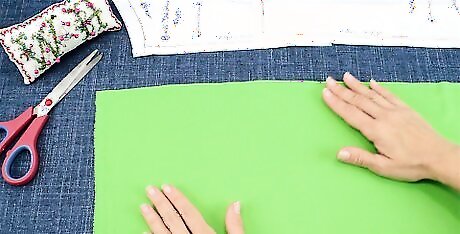
Lay out your fabric on a flat surface, like a table or countertop. Wipe down your surface to make sure it is clean. Smooth your fabric out with the palms of your hands to make sure there aren’t any lumps that will disrupt your pattern. If your fabric is folded over itself, line up the edges so that they are straight.Tip: If your fabric is especially large, lay it out on the floor.
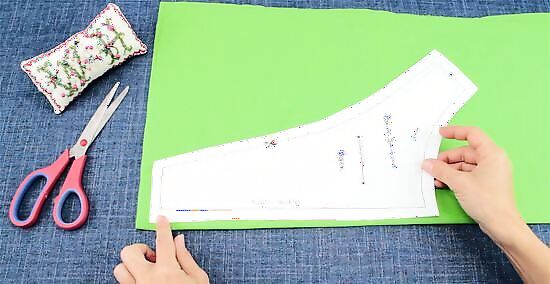
Arrange your pattern facing the same way for patterned designs. If you want your garment to look seamless, lay your pattern pieces facing the same way on your patterned fabric. This ensures that any designs or folds in your fabric will be facing the same way in your pattern pieces. You can also lay your pattern pieces in opposing directions if your pattern instructions call for it.
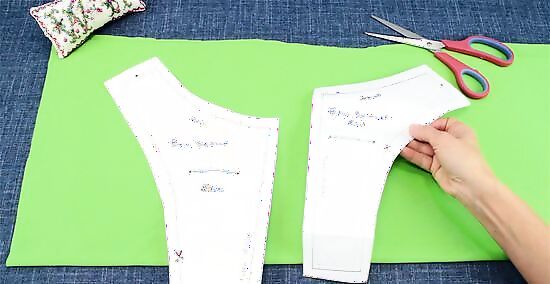
Position the largest pattern piece first. Some patterns have numbers on each piece that specify which one goes where. If yours doesn’t, put the largest pattern piece on the fabric first, and then follow it up with the next pieces in descending size order. Putting the largest piece first ensures that it will have enough fabric.
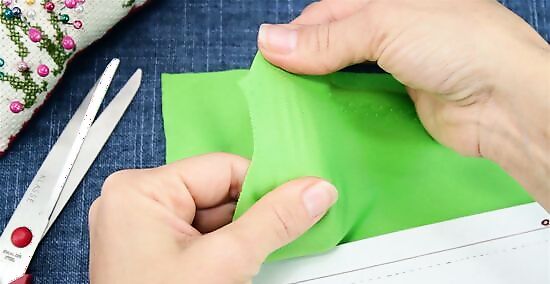
Find the grain of your fabric. Every fabric has a “grain,” meaning the direction that it stretches. Some fabrics like lycra stretch both directions, while others like fleece only stretch 1 way. Test your fabric to see which direction its grain is in by pulling it in both directions and seeing which way it stretches. You can also pull at a loose thread at the end of your fabric and observe which way it pulls. This will show you the direction of the grain.
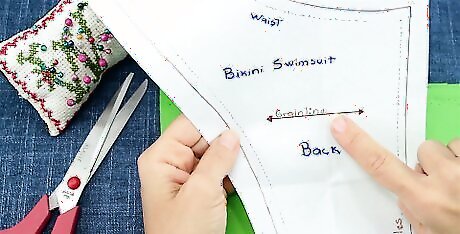
Locate the grainline on your pattern. Most patterns will point in the direction of their grain with an arrow or a line. Find this on the larger pieces of your pattern to identify which way you should be laying your pattern. Often, it is labeled “grainline.”
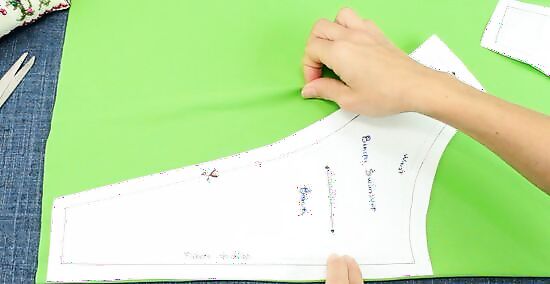
Set your pattern on the fabric with the arrow in the direction of the grain. Lay your pattern on the fabric with the arrow, or grainline, in the same direction as the fabric’s grain. If your pattern calls for your pieces against the grain, lay them with the arrow in the opposite direction. It will be much harder to put on the clothes that you make if they are sewn against the grain, unless your pattern calls for it.
Inserting Pins and Cutting the Fabric
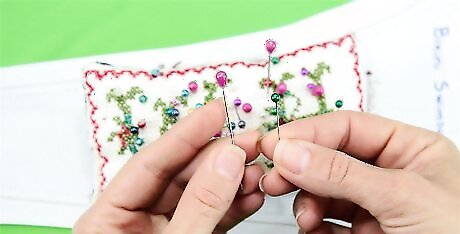
Use straight pins that are an appropriate size for your fabric. Sewing pins come in a variety of sizes. If your fabric is thick, like velvet, use large, long pins. If your fabric is thin and delicate, like silk, stick to small, short pins to avoid damaging the fabric. You can buy sewing pins at most craft supply stores.
Insert a pin every 2–6 inches (5.1–15.2 cm) and at each corner. You do not need a ton of pins to keep your pattern in place, and it's important to keep them spaced out. Use sewing pins to pin down the edges of the pattern onto the fabric. Use a pin at every corner to keep the corners down and about every 2–6 inches (5.1–15.2 cm) on the sides of the pattern, depending on the pattern size. Stick the pin through the pattern and fabric, then bring it back up again through the fabric and the pattern.Tip: Use as few pins as possible to avoid poking too many holes in your fabric, while making sure not to leave huge gaps.
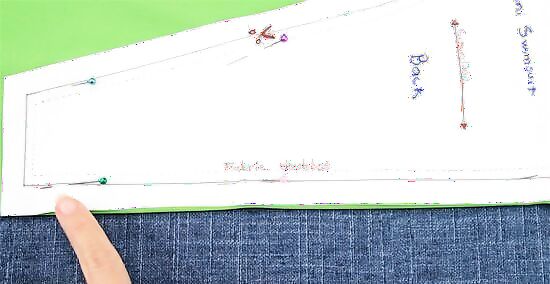
Keep pins on the inside of the pattern lines. Keep the area around the pattern lines free. Put each pin about 1 inch (2.5 cm) away from the pattern edge. Place the pins parallel to the pattern lines to avoid cutting through them.
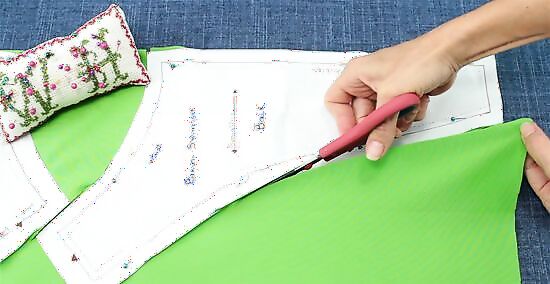
Use sharp scissors to cut your fabric along the pattern edge. Do not cut into any part of the pattern. Cut your fabric along the edge of the pattern. Keep the pins in until you have finished cutting out the entire pattern. Allow your scissors to glide through your fabric to create straight, even lines.
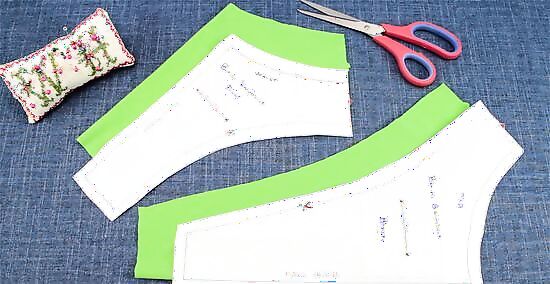
Cut into seam allowances on your pattern if it has any. Seam allowances are extra space given on the edges of a pattern for when you start to sew. They often look like small triangles and may be in clusters of 3. Use your scissors to cut out each triangle before you remove your pattern. Remove the pins and the pattern before you start sewing. Never sew with your pattern in place, or you will end up with your pattern stuck to your garment.










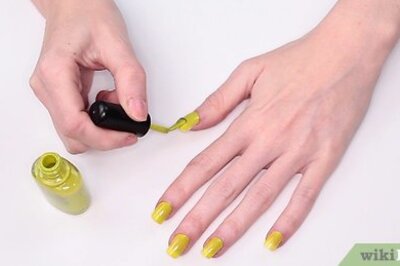
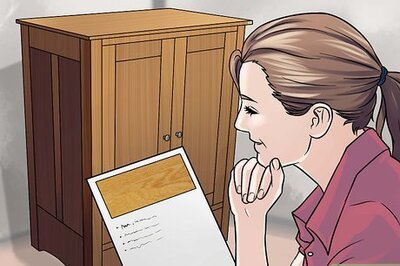
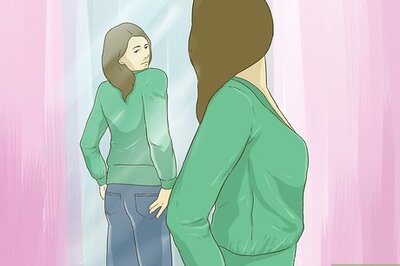







Comments
0 comment